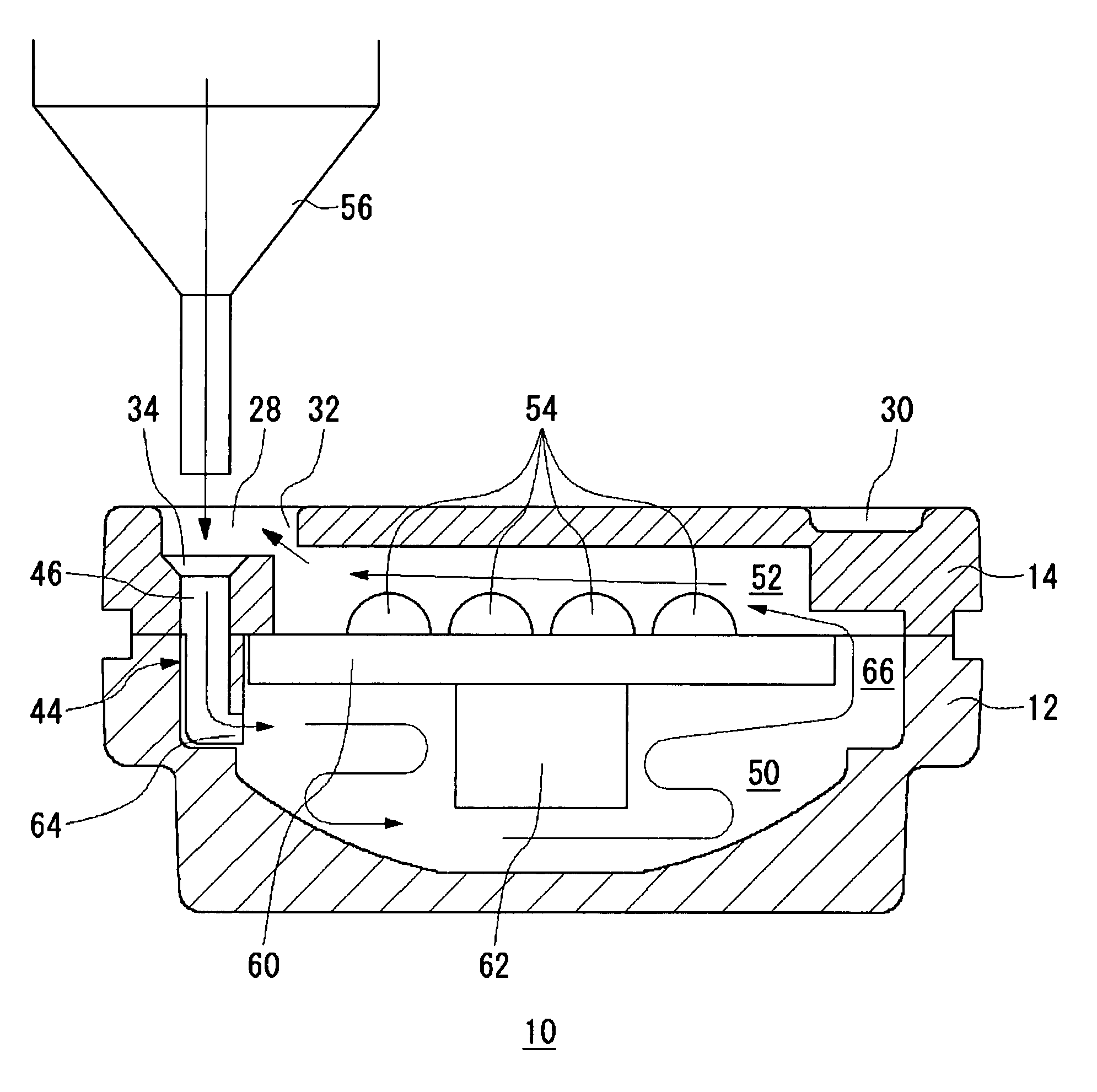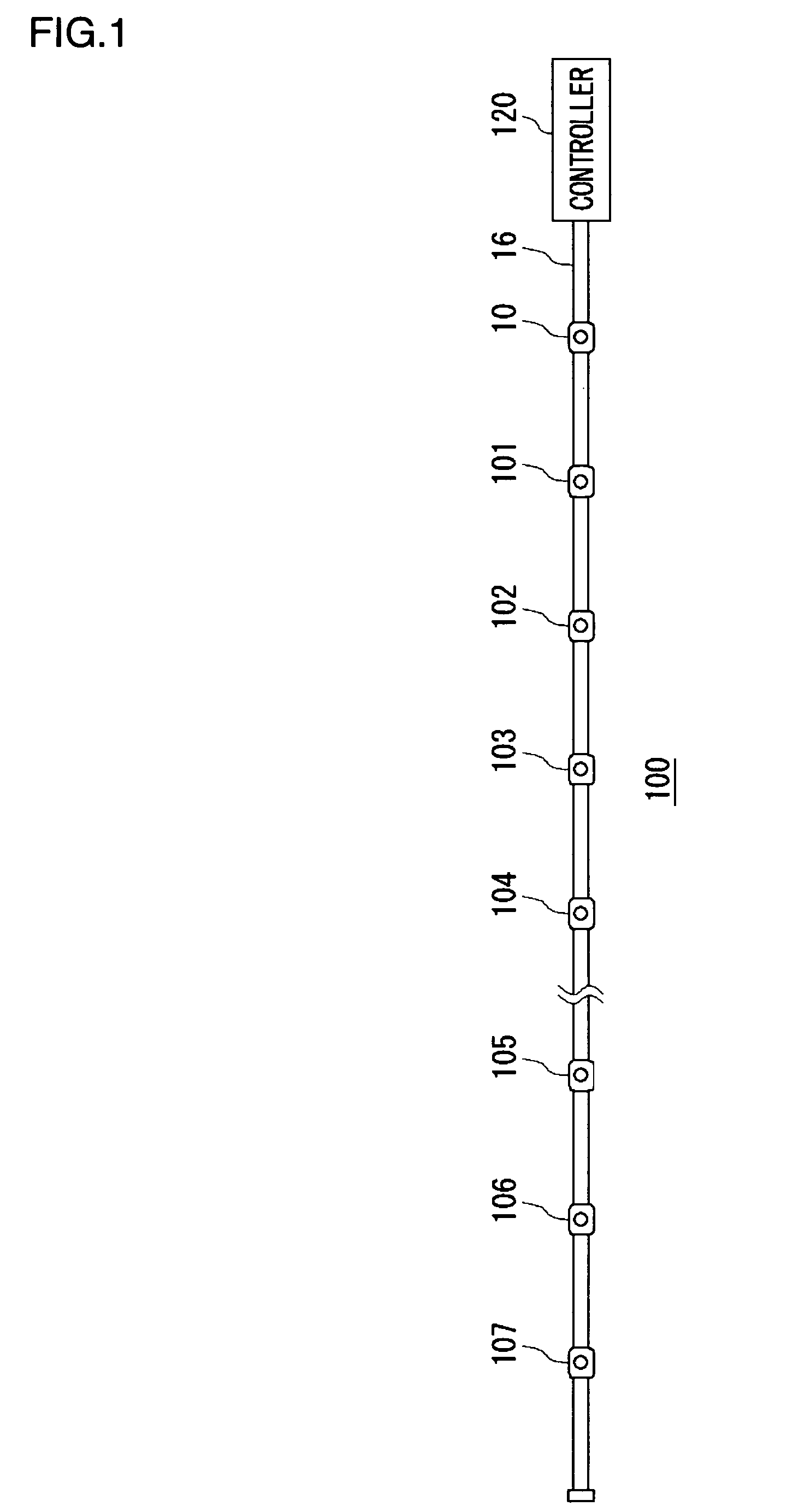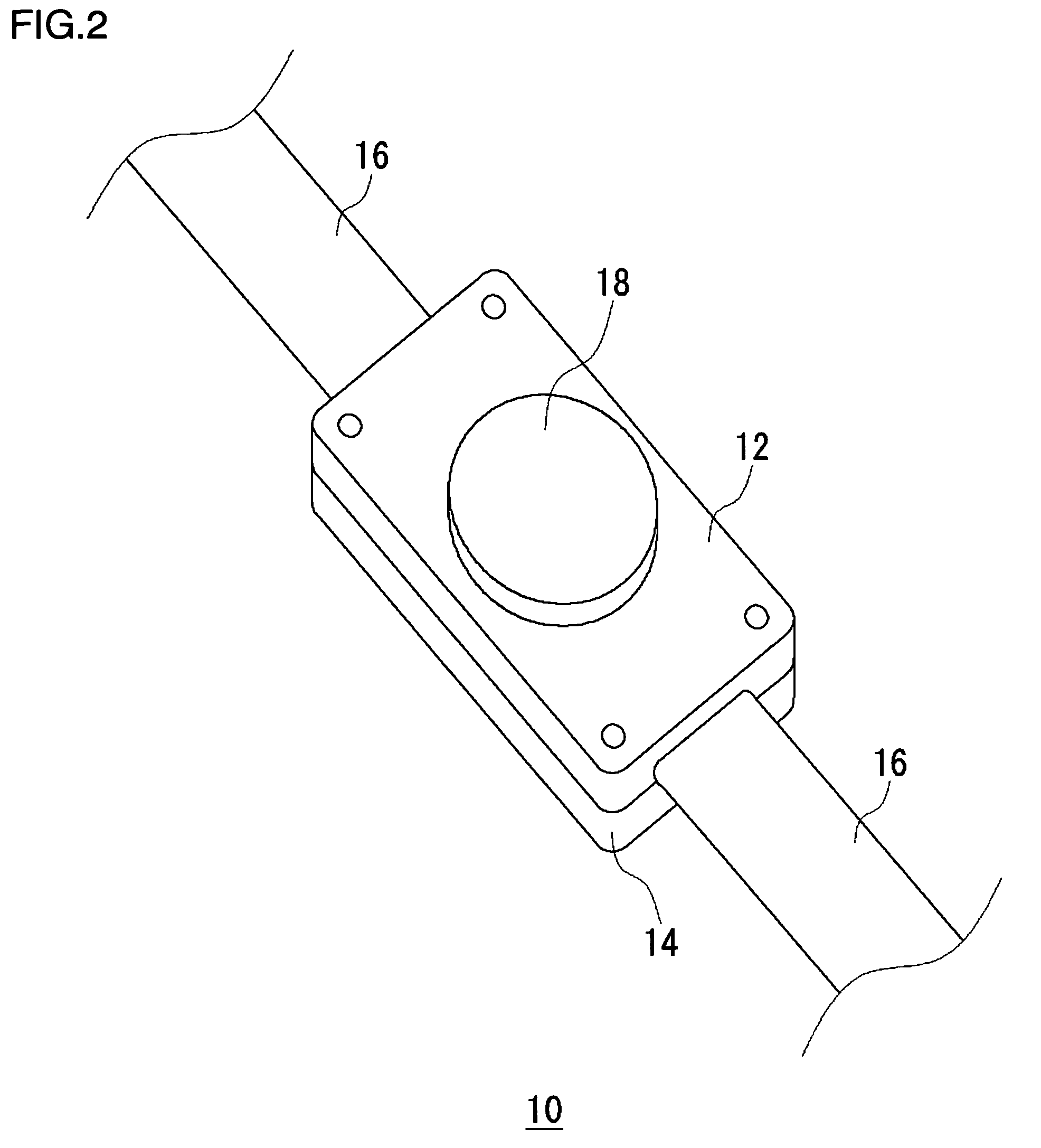Silicone-filled casing for use with light-emitting unit and method of manufacturing the light-emitting unit
a technology of light-emitting units and silicon-filled casings, which is applied in the direction of semiconductor devices for light sources, light-emitting devices, point-like light sources, etc., can solve the problems of reducing the reliability of the product, so as to achieve excellent heat release performan
- Summary
- Abstract
- Description
- Claims
- Application Information
AI Technical Summary
Benefits of technology
Problems solved by technology
Method used
Image
Examples
Embodiment Construction
[0027]The invention will now be described based on the following embodiments which do not intend to limit the scope of the present invention but exemplify the invention. All of the features and the combinations thereof described in the embodiments are not necessarily essential to the invention.
[0028]A light-emitting unit according to the present embodiments has silicone filled in its casing, which is free from air or air bubbles remaining therewithin. This internal condition ensures a high thermal conductivity from the inside of the casing to the outside, thereby releasing the heat arising from light-emitting elements and substrate to the outside efficiently.
[0029]FIG. 1 shows a structure of an illuminating apparatus wherein a plurality of light-emitting units are connected. The illuminating apparatus shown in FIG. 1 is what is called “tape light”, an outdoor or indoor decorative illumination used in commercial spaces. An illuminating apparatus 100 comprises a controller 120, a cabl...
PUM
| Property | Measurement | Unit |
|---|---|---|
| area | aaaaa | aaaaa |
| shape | aaaaa | aaaaa |
| transparent | aaaaa | aaaaa |
Abstract
Description
Claims
Application Information
 Login to View More
Login to View More - R&D
- Intellectual Property
- Life Sciences
- Materials
- Tech Scout
- Unparalleled Data Quality
- Higher Quality Content
- 60% Fewer Hallucinations
Browse by: Latest US Patents, China's latest patents, Technical Efficacy Thesaurus, Application Domain, Technology Topic, Popular Technical Reports.
© 2025 PatSnap. All rights reserved.Legal|Privacy policy|Modern Slavery Act Transparency Statement|Sitemap|About US| Contact US: help@patsnap.com



